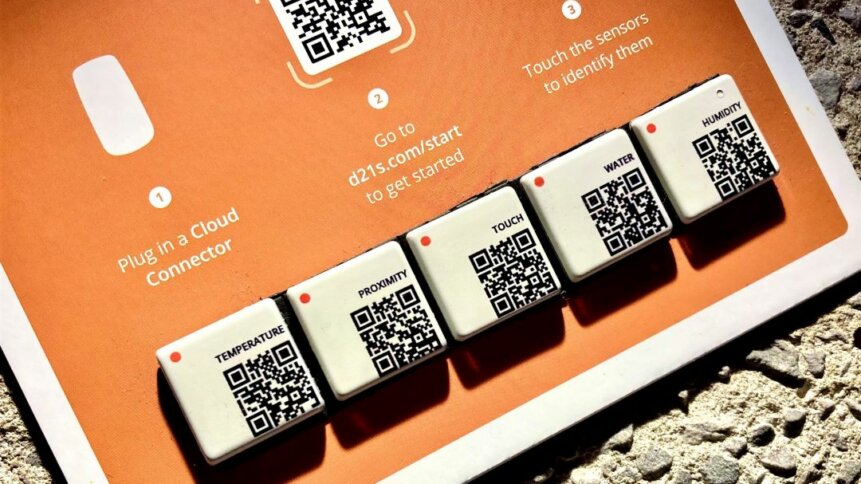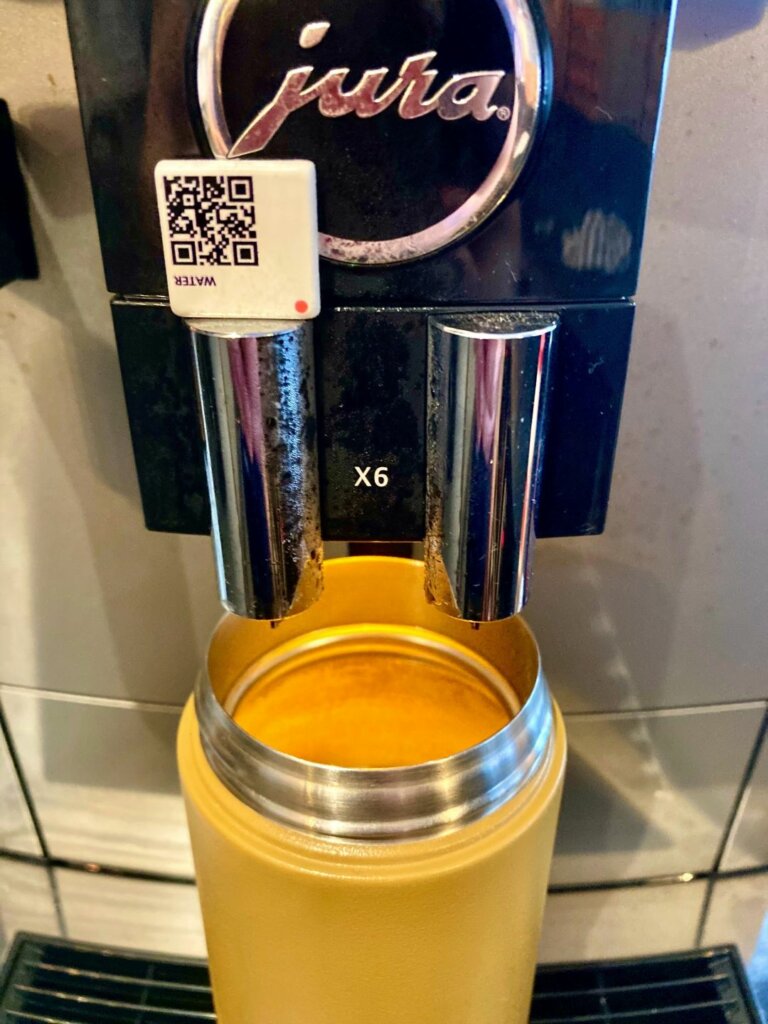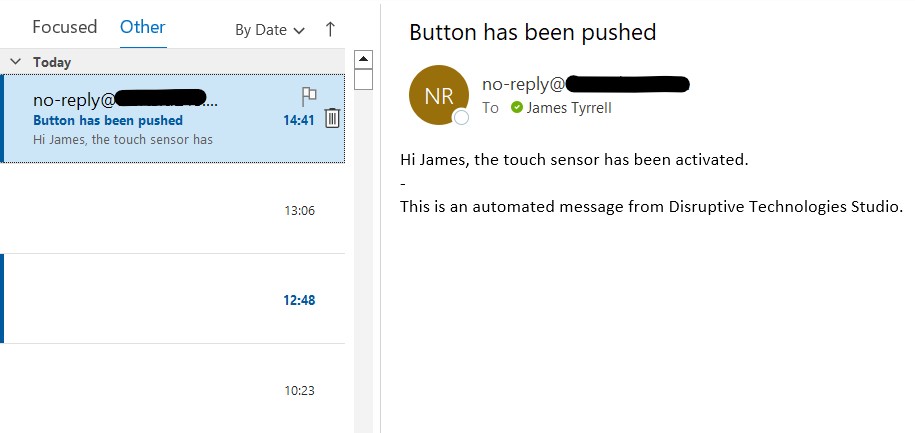Industrial IoT sensors: smart building kit in a box

If you had to pick a list of facilities management topics regularly discussed by staff, office temperature would rank high – possibly in the top spot. And one way of settling any arguments is to attach a thermometer to the wall. But thanks to industrial IoT sensors available as a smart building kit in a box, you don’t have to stop there.
Today, building operators – or anyone wanting to improve the management of their surroundings – can install a variety of industrial IoT sensors to detect not just temperature, but also humidity, signs of water, the proximity of objects or room occupants, and gather much more data besides. And don’t think that you have to arrange for complex cabling.
Smart building kit
Industrial IoT developer – Disruptive Technologies, headquartered in Lysaker, Norway – has shown that sensors can be the size of a small postage stamp, connected wirelessly, and simply stuck to the wall using a peel-off sticker on the back. And if this writer sounds confident of those facts, it’s because TechHQ has been putting the technology through its paces for the past six months as part of a long-term review of the firm’s ‘smart building kit in a box’ sensor starter pack.

Steaming hot: there are many applications for water monitoring IoT sensors. Image credit: JT, TechHQ.
In our unboxing article – which looked at the different types of industrial IoT sensors that were supplied in the pack and what was required to get the smart building kit up and running – we were impressed with how quickly users can begin logging data. All it takes to configure the setup, once the wireless hub has been plugged into a regular mains socket and powered up, is a few QR code scans to assign the sensors to a user account accessed over the internet through a web browser.
And the company-supplied kit has been happily gathering smart building data ever since. The number of possible applications is, in some respects, only limited by a user’s imagination. Even with just the five sensors supplied in the starter pack there are still a wide variety of applications that can be served. And you can get creative – for example, by using the water detector to sense when fresh coffee (based on steam coming out of the drinks machine) has been brewed.
As mentioned in our interview with Øystein Moldsvor, Co-founder and VP of Engineering at Disruptive Technologies, the moisture-sensing capabilities of the firm’s industrial IoT sensors are being used to help protect historic buildings (such as the Royal Opera House in London, UK) by providing early leak detection.
The data dashboard, which users can log into via the web, allows operators to monitor the various information feeds remotely. And alerts can be configured to send maintenance personnel email notifications based on sensor triggers. The starter kit includes a touch sensor, which we programmed through the DT Studio online app – as part of our testing – to send an email when someone pushed it. And the system worked first time.

TechHQ test results: email alerts can be configured based on smart IoT sensor triggers.
Other users have been impressed too. Norwegian software developer Datec has partnered with Disruptive Technologies to integrate the industrial IoT sensors into a facilities application dubbed CleanPilot. “We use the sensors to automatically adjust the active cleaning schedule – presented to the cleaner through the iOS CleanPilot GO app – by adding, postponing, or cancelling cleaning tasks according to the actual use of the premises,” Geir Arne Hansen, Chief Administrative Officer at Datec, told TechHQ.
Technical partnership
Datec believes that need-based cleaning – enabled through easy-to-install smart building kit and companion planning, operation, and optimization software – can increase cleaning efficiency by 30%. Operatives can view the paperless system using iPads. And a web portal gives managers real-time data on cleaning activities throughout the facility.
In the Datec solution, wireless proximity sensors provided by Disruptive Technologies are used to measure the number of people passing through different parts of the building. And this information is used to generate cleaning plans based on actual needs. For example, teams can focus on areas that have been used that day rather than working to a sub-optimal strategy of spreading cleaning time equally across the whole facility.
Customers include hospitals and government agencies, and it’s another example of how industrial IoT sensors are helping to streamline facilities management and buildings operations. As well as the motion sensors featured in the Datec CleanPilot integration, other available wirelessly connected peripherals include desk occupancy sensors.
These unobtrusive electronic devices make it easy to understand office utilization in real-time – for example, to help with space planning for hybrid working patterns. And, like all of the sensors, these small-sized units have an incredibly long battery life (8 years in the case of the desk occupancy design) thanks to clever, energy-efficient wireless transmission protocols.
Also part of the product line-up are wireless carbon dioxide (CO2) sensors – with a battery life of 10 years – that can, together with temperature, humidity, and other measurement feeds, keep track of environmental factors that impact workers’ health and productivity.
Having a plug-and-play eco-system that lets anyone – not just developers – explore the benefits of smart buildings is a game-changer. And as more users share their IoT sensing stories, others will undoubtedly be tempted to give the technology a go. We’ve had great fun putting the sensor starter kit to the test, and it’s an ideal launch pad for smart building ideas.









